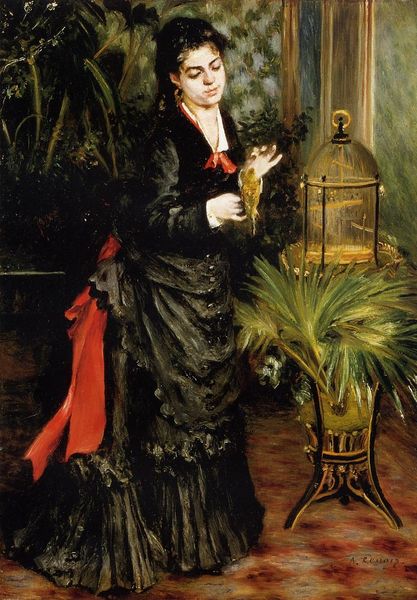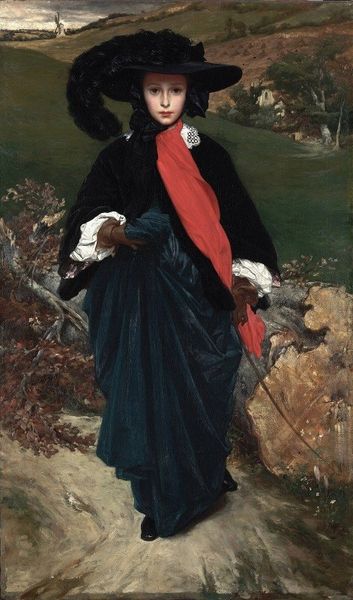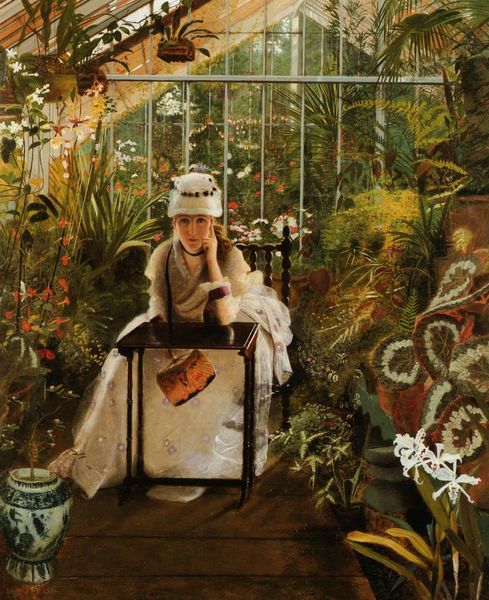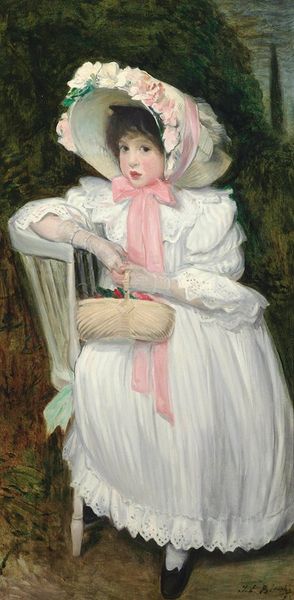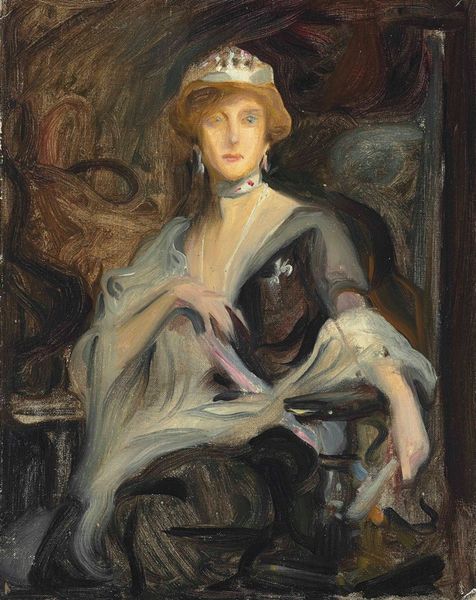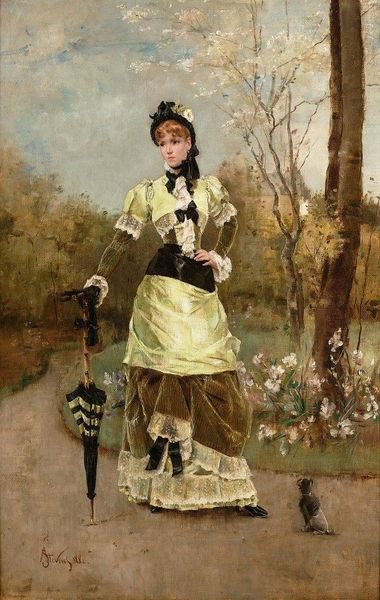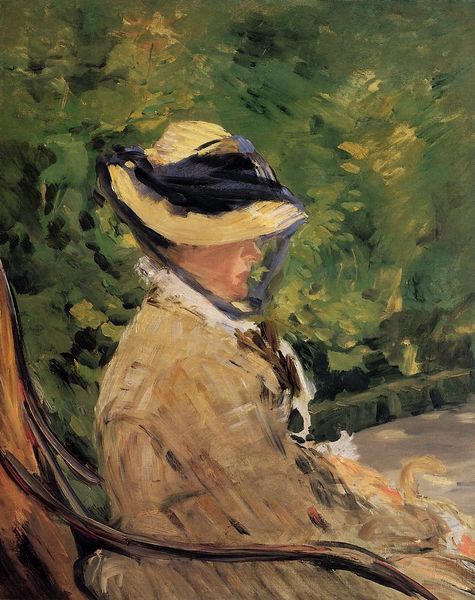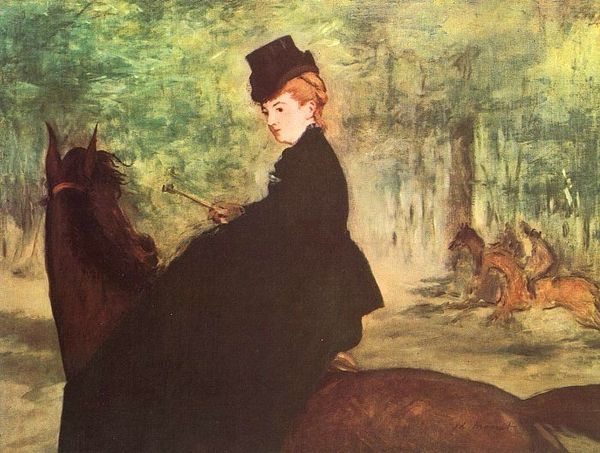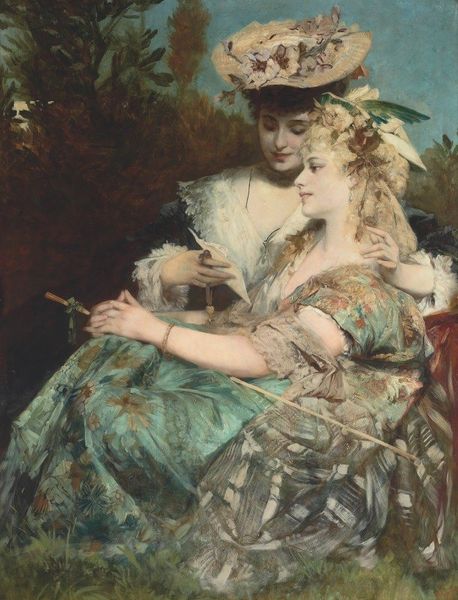
painting, oil-paint
#
portrait
#
painting
#
impressionism
#
oil-paint
#
oil painting
#
neo expressionist
#
romanticism
#
genre-painting
#
history-painting
#
lady
#
portrait art
Copyright: Public domain
Curator: Here we have Henri Gervex's "Portrait of Marie Clotilde De Faret, Comtesse De Fournes," a piece executed in oil paint. The date of its creation remains unknown. Editor: It projects such a quiet mood, almost melancholy. I am struck by the interplay between the subject's reserved posture and the rather opulent natural setting. Curator: The artist clearly emphasizes line and form. Observe how the composition leads your eye. The countess’s pose – the angle of her hat, the delicate hand supporting her chin – all create diagonal vectors that are countered by the horizontal structure of the balustrade. There's a careful geometry at play. Editor: Indeed, but what stories does this painting hold? Marie Clotilde, as a Comtesse, existed within a highly stratified society. How much freedom did she truly possess? Her wistful gaze feels charged with questions of social constraints placed upon women of her standing. Curator: Certainly, the context of her time is important, but it's also essential to appreciate how Gervex uses the principles of Impressionism. The brushstrokes, although refined, still capture fleeting effects of light and atmosphere, enriching the visual texture. It creates a certain je ne sais quoi. Editor: Light is deployed as a rhetorical device in many female portraits of this period. However, the dim shadows here also speaks to the limited roles afforded to aristocratic women outside their domestic sphere. The umbrella and scarf she carries could function as metaphors, suggesting a readiness for travel but simultaneously implying confinement. Curator: Regardless of whether confinement or liberation is communicated, the painting invites contemplation about the countess. We can consider formal features like color composition and tonal shifts to build an experience for the viewer. Editor: Examining it in conversation with feminist readings allows us to reconsider how women of this era navigated public image and private introspection. This can open up some fascinating discourse around how we might understand gender, status and power then, as well as now.
Comments
No comments
Be the first to comment and join the conversation on the ultimate creative platform.
